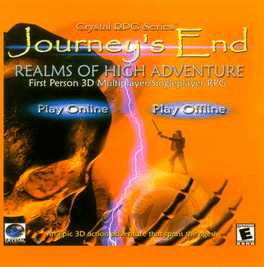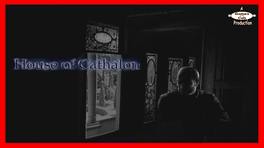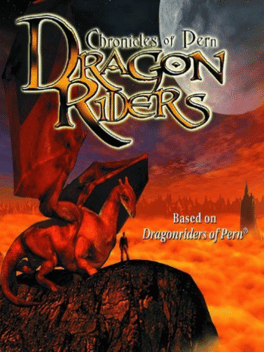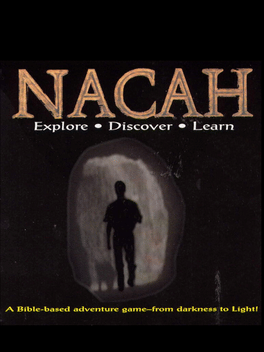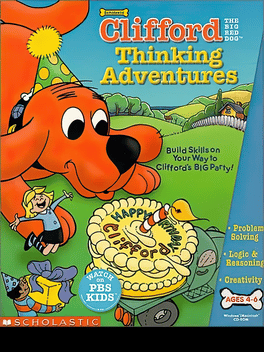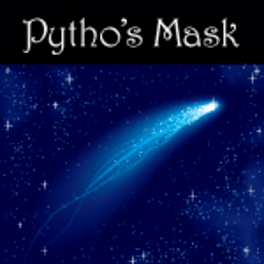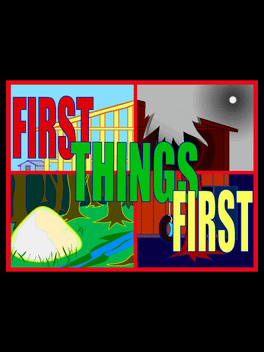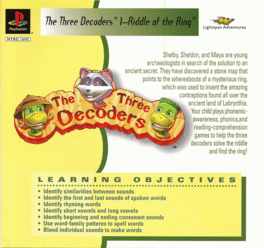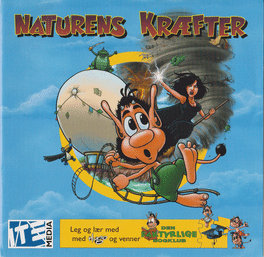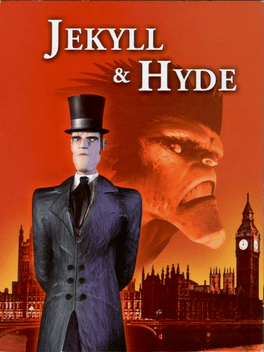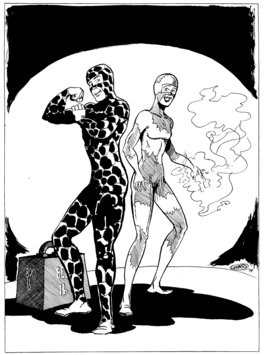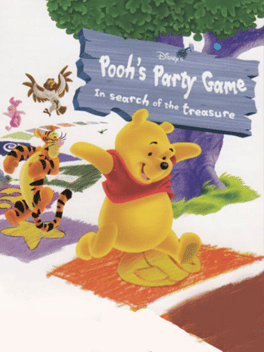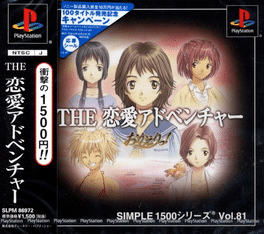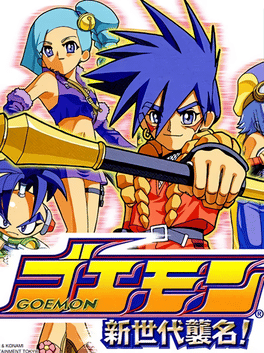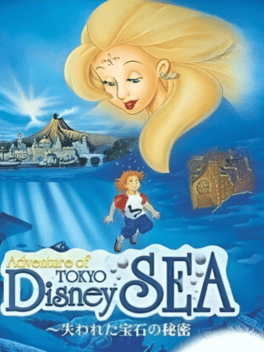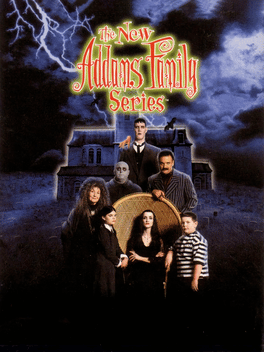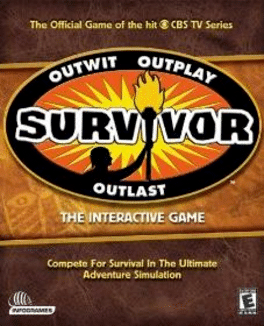New Adventure Games - Page 427
-
Journey's End
2001
-
House of Cathalon
2001
-
A Day for Fresh Sushi
2001
You are in your girlfriend's studio. Before you deal with your other errands, you have to feed Britney's fish. -
Dragon Riders: Chronicles of Pern
2001
star 6.4The Dragon Riders of Pern have protected their world from the alien oppressor Thread, but now they have all gone extinct. Unless you can find a new rider to take up, the world of Pern is doomed. From this point the game takes the player through four chapters with a vast storyline. Dragon Riders is a game in 3D with strong RPG and action elements. The world of Pern is based upon the novels by Anne McCaffrey. The game contains over 120 locations on three continents. The player can interact and speak with over 170 characters. -
A Dark and Stormy Entry
2001
You're a writer, trying to turn a blank page into a story. Start with the setting. Should the story take place in Scotland? Io? Tied to a kite? Somewhere completely imaginary? Or maybe you shouldn't start with the setting? -
Nacah
2001
-
Pytho's Mask
2001
Pytho's Mask
2001
On the Night of the Comet, the usual astrological bonds do not hold, and the order of the universe is threatened. It is a time made for rebels and usurpers, and all who would claim the kingdom for themselves. You are a member of the Order of the Phoenix, a protector of the hierarchy and the kingdom itself. It is your duty to attend the royal ball, watch for dangers... and do whatever needs to be done. A piece of Interactive Fiction written by Emily Short. -
First Things First
2001
First Things First
2001
You've just arrived at home from your nightly visit to the science and invention section of the local public library, where you spend each night dreaming your dreamy dreams of one day inventing a time travel machine. Tonight, for some reason, you're especially fatigued, and can't wait to get inside and go right to bed. Seems like a good plan, but somehow you have a premonition it's not going to be that easy... A piece of interactive fiction written by J. Robinson Wheeler. -
The Three Decoders 1 - Riddle of the Ring
2001
An educational game for the original PlayStation that was only sold to schools in a bundle package with other titles. -
Hugo: The Forces of Nature
2001
The media franchise Hugo includes numerous video games based on or inspired by an interactive television game show of the same title. The series of more than 30 games, including spin-offs, sold over 10 million copies for the Amiga, Commodore 64, PC, PlayStation, PlayStation 2, Game Boy, and mobile game systems. Most of the titles are platform games or minigame sets, but there are also some educational games. -
Jekyll & Hyde
2001
Jekyll & Hyde
2001
Based on the famous novella from Robert Louis Stevenson the player experience the fascinating world of Jekyll & Hyde and must solve the secrets behind London's underground world. Fascinating storyline about a conspiracy of an ancient mysterious sect. Therefore all puzzles (quests) are based on the Greek mythology. Combining classical Point and Click features with action elements, Jekyll and Hyde is featuring a 3D engine with a lot of special effects. Players must solve the quests with two completely different characters. -
Earth and Sky
2001
Earth and Sky
2001
A piece of Interactive Fiction written by Paul O'Brian. The first game in the Earth and Sky trilogy. -
Disney's Pooh's Party Game: In Search of the Treasure
2001
Winnie the Pooh's Party Games: In Search of the Treasure is an adventure board game mixed with a compilation of exciting mini challenges that make it fun for a gathering of up to four friends. The game centers around a virtual board game that is simple fun and addicting. Each round starts a different mini-game and the results determine how each player advances on the main board. -
Maximo: Ghosts to Glory
2001
star 7.8The game is based in the Ghosts'n Goblins universe and features original character designs by Japanese illustrator Susumu Matsushita. The character is controlled by the player and can move freely within areas by running, jumping, crouching, and performing other various motions. Gameplay revolves around defeating large numbers of enemies, which can be accomplished by attacking with a sword and shield and combos and special moves. Maximo fights wearing armor, if he is hit, he will lose corresponding pieces of armor and eventually be reduced to wearing his boxer shorts, with another hit resulting in him losing a life. If Maximo loses all his lives, he can continue by giving Death Coins to the Grim Reaper. However, every time he loses all his lives, the required cost for a continue increases. -
Simple 1500 Series Vol. 81: The Renai Adventure - Okaeri!
2001
Simple 1500 Series Vol. 81 - The Renai Adventure - Okaeri! is a dating first person adventure. -
Goemon: Shin Sedai Shuumei
2001
Goemon: Shin Sedai Shūmei! is a game in the Ganbare Goemon series released for the PlayStation on December 20, 2001 in Japan. It is a spin-off of the original Ganbare Goemon series. In February 2002, a conversion of this game was released for the Game Boy Advance titled Goemon: New Age Shutsudō!, with various modifications and cuts made from the original PlayStation version. Neither version was released outside of Japan. -
Adventure of Tokyo Disney Sea
2001
In this game all the seven "ports of call" from the Tokyo DisneySea are represented: Mediterranean Harbor, American Waterfront, Lost River Delta, Port Discovery, Mermaid Lagoon, Arabian Coast, and Mysterious Island. The Aqua Sphere (symbol of the park) is also depicted. Disney's characters include Aladdin and Ariel, among many others. The main objective is to collect cards (containing rock-paper-scissors). Some will be given while others can only be obtained if the player defeats his opponent. The versus battles occur through card usage. Some of these cards are the key to defeat the toughest opponents. -
The New Addams Family
2001
They're creepy, kooky, mysterious, spooky, and in trouble up to their ears! It seem that a nefarious real estate agent has designs on turning the family mansion into a high-rent amusement park, and the only way the Addams family can save their old haunt (no pun intended) is to win a court battle. Since courtroom dramas don't make for good video games, the object here is to help the well-meaning Addams clan locate the original ownership papers for the house in order to prove that the land is rightfully theirs. You'll be able to explore 30 massive levels of spooky territory making your way through the mansion, the high court, town hall, a greenhouse, a mineshaft, city streets, and more. There are plenty of power-ups available throughout the game, and each level sports a movie sequence featuring characters from the popular television series. You don't have to be even remotely strange or morbid to get plenty of thrills and chills from The New Addams Family.
